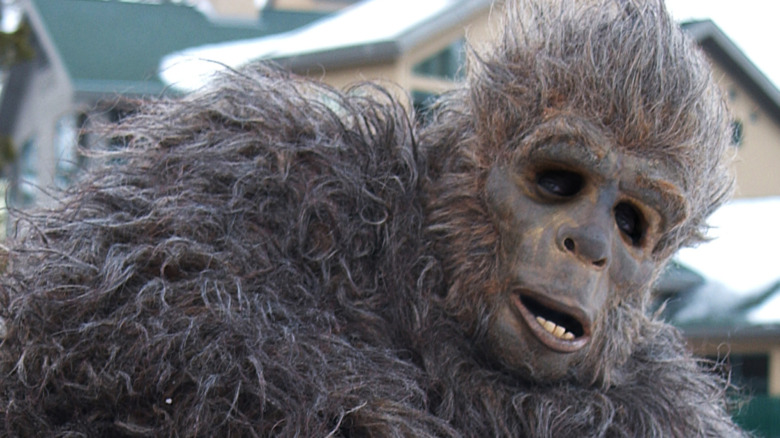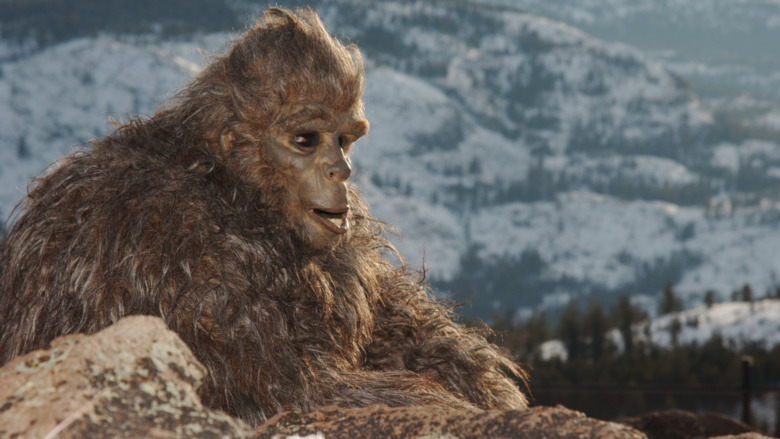Who Was The First Person To Claim A Sasquatch Sighting?
He's not quite man and he's not quite ape, and despite the lack of corroborating evidence to prove his myriad sightings through the years, many people still swear that he truly exists. Regardless whether you refer to this mythical creature as Sasquatch or Bigfoot, the photographs, audio recordings, and wild stories still keep coming in from those who believe he roams the forests of North America, emitting an unpleasant odor as he walks on two feet, typically (and thankfully?) minding his own business. Countless movies and TV shows have been made about him, and there's even a very recent Hulu documentary that looks into the allegations that Sasquatch was responsible for three brutal murders that took place about two-and-a-half decades ago.
Some of the better-known Sasquatch/Bigfoot sightings were documented in comparatively recent decades, as noted by Britannica, but one has to go back more than two centuries for the first time someone claimed to have seen evidence of the elusive beast. And it wasn't even somebody from North America who made this claim. Let's take a look at this possible Sasquatch sighting and the person behind the alleged discovery.
Per Britannica, David Thompson was a British explorer who is believed to be the first individual to have spotted Sasquatch's footprints. As further explained by Sasquatch Alberta, Thompson's journals stated that on January 7, 1811, he saw some unusual footprints belonging to a large, unknown animal while he was above the mouth of Whirlpool River in Alberta.
Sasquatch was allegedly spotted by British explorer David Thompson in 1811
"I measured it; four large toes each of four inches in length; to each a short claw; the ball of the foot sunk three inches lower than the toes, the hinder part of the foot did not mark well, the length fourteen inches, by eight inches in breadth, walking from north to south, and having passed about six hours," he wrote.
Thompson then pointed out that he and his fellow explorers were not in the mood to follow the tracks and investigate their source. However, he theorized that the footprints, while similar to those of a large grizzly bear in a number of ways, had several peculiarities, including short nail prints and an even greater size than what one would expect from such an animal. This sighting clearly had a lasting impact on Thompson, who referred to it multiple times in his eponymous Narrative.
Aside from Thompson's account, History Collection wrote that several centuries prior, Norse explorer Leif Erikson's sagas told of how he purportedly encountered large, howling creatures that were "horribly ugly, hairy, swarthy and with great black eyes" — pretty similar to the traditional depiction of Sasquatch. Then you've also got the Native American legends that described the creature in varying ways — either as gentle giants that help those in danger or malevolent beasts that randomly kidnap or attack people in the woods.

